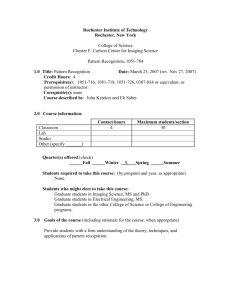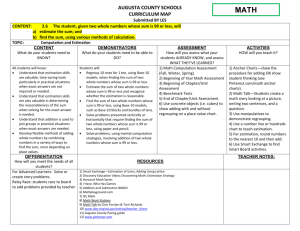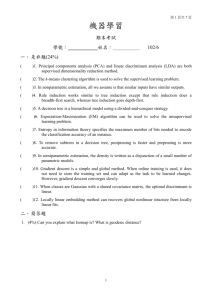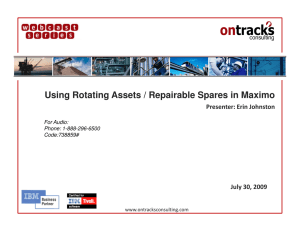CONTENTS - Gnedenko e
advertisement
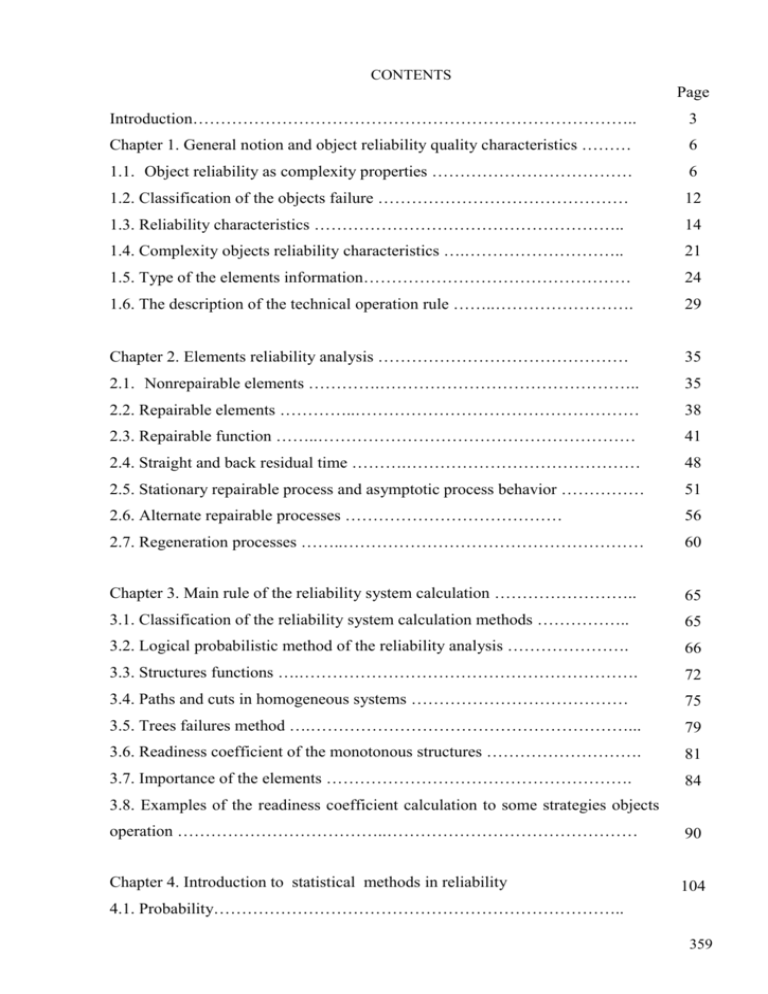
CONTENTS Page Introduction…………………………………………………………………….. 3 Chapter 1. General notion and object reliability quality characteristics ……… 6 1.1. Object reliability as complexity properties ……………………………… 6 1.2. Classification of the objects failure ……………………………………… 12 1.3. Reliability characteristics ……………………………………………….. 14 1.4. Complexity objects reliability characteristics ….……………………….. 21 1.5. Type of the elements information………………………………………… 24 1.6. The description of the technical operation rule ……..……………………. 29 Chapter 2. Elements reliability analysis ……………………………………… 35 2.1. Nonrepairable elements ………….……………………………………….. 35 2.2. Repairable elements …………..…………………………………………… 38 2.3. Repairable function ……..………………………………………………… 41 2.4. Straight and back residual time ……….…………………………………… 48 2.5. Stationary repairable process and asymptotic process behavior …………… 51 2.6. Alternate repairable processes ………………………………… 56 2.7. Regeneration processes ……..……………………………………………… 60 Chapter 3. Main rule of the reliability system calculation …………………….. 65 3.1. Classification of the reliability system calculation methods …………….. 65 3.2. Logical probabilistic method of the reliability analysis …………………. 66 3.3. Structures functions ….……………………………………………………. 72 3.4. Paths and cuts in homogeneous systems ………………………………… 75 3.5. Trees failures method ….…………………………………………………... 79 3.6. Readiness coefficient of the monotonous structures ………………………. 81 3.7. Importance of the elements ………………………………………………. 84 3.8. Examples of the readiness coefficient calculation to some strategies objects operation ………………………………..……………………………………… 90 Chapter 4. Introduction to statistical methods in reliability 104 4.1. Probability……………………………………………………………….. 359 4.2. The elements of the estimation theory …………………………………… 104 4.3. Sufficient, necessary and minimal statistics ………………..…………….. 113 4.4. Fisher information. Rao-Cramer inequality ……………………............. 118 4.5. Maximum likelihood method ………………………………………………. 120 4.6. Censored data models …..………………………………………………… 124 4.7. Longevity models ………………………………………………………….. 126 140 Chapter 5. Hypotheses statistical testing methods ……….…………………….. 5.1. Polynomial distribution and the chi-square Pearson test ……………….……. 154 5.2. Chi- square type tests…. …………………………………………… 154 5.3. Some results on the estimation theory ……..…………………………….. 165 5.4. Generalization of tests of the chi- square type ……………………………… 168 5.5. Bolshev test for the exponential distribution checking.…………………. 172 5.6. Test for Weibull family of distributions ……………………………. 177 182 Chapter 6. Nonparametric methods to the statistical information analysis ……. 6.1. Empirical distribution. ……………………………………………………. 188 6.2. Median of the empirical distribution ……………………………….. … 189 6.3. Kolmogorov distribution …….…………………………………………… 199 6.4. Kolmogorov-Smirnov test for full samples ………………………. 202 6.5. Kolmogorov-Smirnov test for Hypothesis of homogeneity. ..…..…… 204 6.6. 2 test ……….…………………………………………………………… 207 6.7. Sign test ………..…………………………………………………………. 209 6.8. Nonparametric density estimation. Histogram. Rosenblatt estimate. Kernel 210 estimates ………………….……………………………………………… 6.9. Tchentsov estimation of the distribution density …………………… 213 6.10. Nonparametric density estimation on the censored information …………. 218 6.11. Kernel estimates of the failure flow parameter …………………………. 222 232 Chapter 7. Introduction in the accelerated life testing theory …………………... 7.1. Lehmann models on a set of constant in time stresses ……………………. 240 7.2. Sedyakin principle ….……………………………………………………... 240 360 7.3. Sedyakin model and redundant system analysis ………..………………… 246 7..4. One model of accelerated life testing ……………………………………. 249 7.5. Regression models of longevity ………………………….. 252 7.6. CHSS model. One important generalization of the AFT model ………… 275 7.7. Degradation models.………………………………………………………. 287 7.8. One example of the depending of wearing out of the tyres from stress 299 modeling ………………………………………………………………………… 303 Chapter 8. Ageing effect account models of the equipment operation ………… 8.1. Problems of the estimation of reliability characteristics in the closing stage 308 of service……………………………………………………………………….. 8.2. Hazard rate – function, which are shown the object reliability level ………. 308 8.3. One model with wearing out coefficient.………………………………….. 309 8.4. Normalizing failure flow function ………….……………………………… 314 8.5. One model of the ageing type object operation with random repairable 319 time……………………………………………………………………………… 327 Chapter 9. Many dimensional longevity models ……………………………… 9.1. Two dimensional models …………………………………………………. 332 9.2. Two dimensional longevity models ……………….…………………….. 332 9.3. Estimation in two dimensional longevity models ……………………. 337 340 References…………………………………………………………… 344 361






